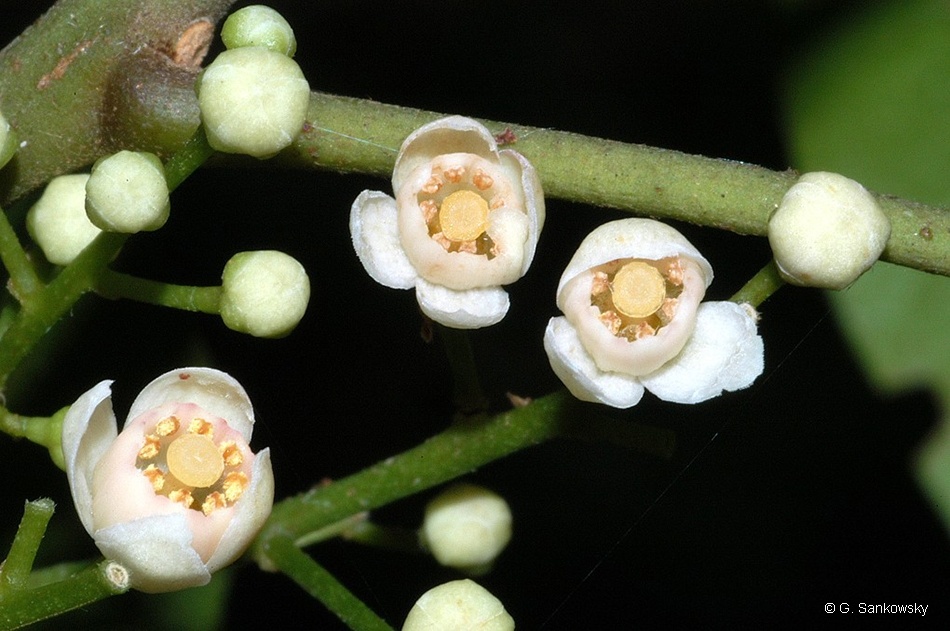Australian Tropical Rainforest Plants - Online edition
Synoum glandulosum (Sm.) A.Juss. subsp. glandulosum








Mabberley, D.J. (1998), Notes on Australian Meliaceae. Telopea 8(1): 48
Scentless Rosewood, Bastard Rosewood.
Shrub or tree 4-20 m; bark rough, irregularly scaly, sometimes with small buttresses and often suckering. Young stems hairy, becoming hairless with age.
Leaves compound, alternate. New growth reddish. Stipules absent. Petiole 2-6 cm long. Leaflets 5-9 (occasionally 3 or 11), opposite, pinnately compound, imparipinnate (leaves ending with a terminal leaflet). Stalk of the terminal leaflet generally longer than those of the lateral leaflets; lateral petiolules 1-3 mm long, terminal petiolule 1-15 mm long. Leaflet blade oblanceolate, narrowly obovate, oblong or elliptic, 2-13.5 cm long, 1.5-4.5 cm wide, base cuneate or attenuate, sometimes asymmetric, margins entire ± undulate/sinuate, apex acuminate, sometimes acute. Lateral veins 5-11 pairs. Domatia present as small hairy tufts. Surfaces hairless or only very sparsely hairy. Oil dots obscure and very small.
Inflorescences axillary, paniculate, much shorter than the leaves. Pedicels 3-6 mm long. Flowers apparently unisexual and plants dioecious, however well developed rudimentary parts in flowers give the appearance of bisexual flowers, actinomorphic, usually 4 merous (rarely 5), white to pale pink, sweetly scented. Sepals free or only shortly fused at base ± deltoid, c. 0.5 mm long. Petals free, elliptic, 4-6 mm long. Stamens usually 8 (-10), fused into a cup-like tube, 3-5 mm long, lobed at apex, anthers partly exserted from tube. Disk obscure; ovary superior, pubescent, 2 or 3-locular, style short, 2-2.5 mm long with discoid stigma, terminal and peltate.
Fruit leathery to fleshy, a capsule, 3-lobed, 1-1.5 cm long, 1.2-2.7 cm wide, reddish or pinkish fawn, usually 3-valved, glabrous. Seeds 2 or 3; 12-13 mm long, 7-8 mm diam.; aril fleshy, red, completely or partly covering seed. Cotyledons green, folded lengthways.
Occurs in NEQ, CEQ and southwards to south eastern New South Wales. Common in most kinds of rainforest on margins and in gullies in sclerophyll forest.





